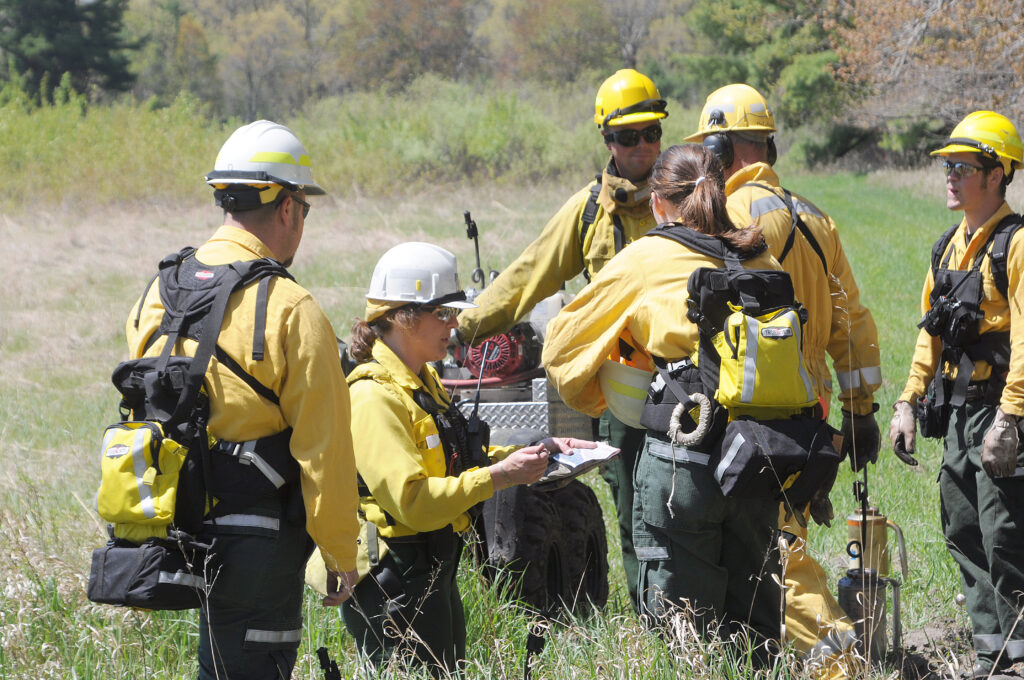Have you ever thought about getting paid to help protect and manage our forests? Finding your path to becoming a forester with wildland firefighting responsibilities starts with loving the outdoors and, of course, TREES! If this field interests you, it’s never too early to start planning your career.
Besides knowing about trees and forestry practices, you need to learn about other parts of the forest ecosystem. We wouldn’t have trees without soil, so some foresters study soil science. And we wouldn’t have soil without rocks and wind and rain and ice, so some study geology and meteorology. And we wouldn’t have big bucks if it weren’t for properly managed forests, so knowing about birds, insects and all kinds of animals is also important for foresters.
Math is another important aspect of being a forester. This is beneficial for knowing how big, tall, old and crowded the trees are in a forest. That information helps make important management decisions. Some management questions foresters ask are, is it time to cut trees? Do we need to prune the trees, so they grow straight and tall? Do we need to plant more trees? Do we need to take action against an insect or disease that threatens the trees? These are all decisions a forester helps to make.
Many foresters in Wisconsin also have wildland firefighting responsibilities, so it’s important to have experience in both fields. To become a wildland firefighter, it’s important to understand key fire management principles and how the weather plays an important role in how fire behaves. Understanding fire suppression tactics and how specialized equipment is used in forest fire management is also important. Knowing about the Incident Command System, which is used to organize resources in major natural resource disasters, is another job duty.
Let’s not forget, you have to be in good physical shape! Hauling heavy fire equipment, laying hose and digging a fire line can be grueling work. Foresters with fire line responsibilities must meet the moderate level “work capacity test,” or physical fitness standard, by completing two miles wearing a twenty-five-pound pack in under 30 minutes.
Most professional foresters have at least a bachelor’s degree in forestry. Many also have a Master’s Degree. If you want to be a forester, you should plan on going to college. While in high school, take science, math and English classes. Summer jobs or volunteer work in natural resource management will also give you valuable experience.
Some foresters work for the government, including Federal, State, County or City. Other foresters may work for lumber or paper companies. Some foresters are private consultants who work for themselves or a consulting company.
Benefits of being a forester:
- Get to wear jeans and boots to work almost every day!
- Spend time outdoors all year round
- Work with landowners who want to learn and care for their forests
- Talk to children about the benefits of trees and forests
- Show how to plant and care for tree seedlings properly
- Help decide when the time is right to cut trees down
- Protect lives, property and natural resources from wildfires
Challenges of being a forester:
- Meeting people who think forests are a waste of land
- Seeing a forest that is not properly managed
- Witnessing forest products being wasted
- Seeing a forest destroyed by fire, insects, disease or human development
- Wildfires are unpredictable and can sometimes result in an irregular work schedule
- Fighting fires is a rewarding, but sometimes, a very dangerous job

Foresters in the field preparing for prescribed fires. Photo Credit: Wisconsin DNR
